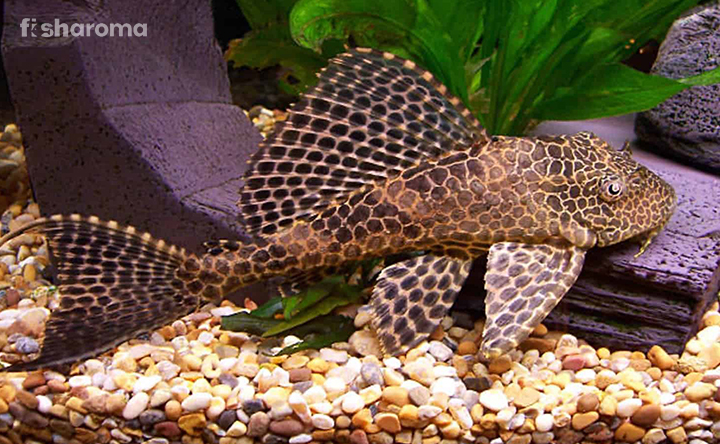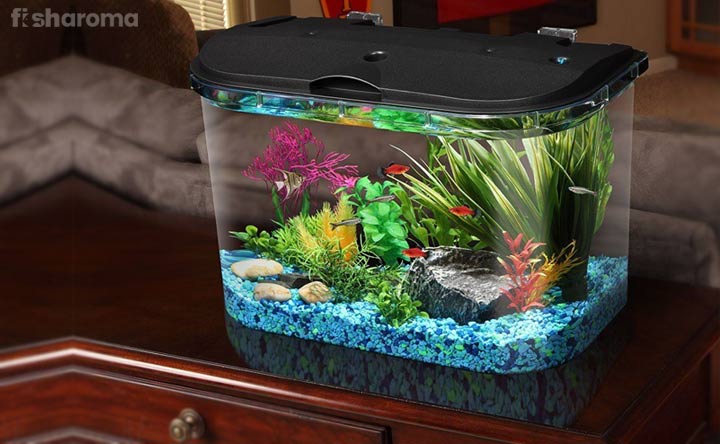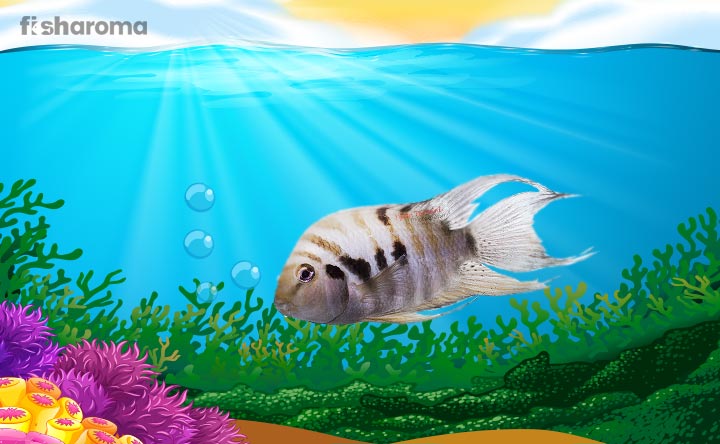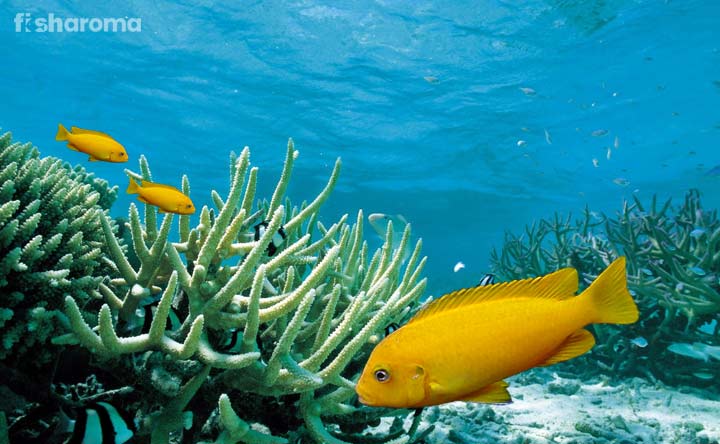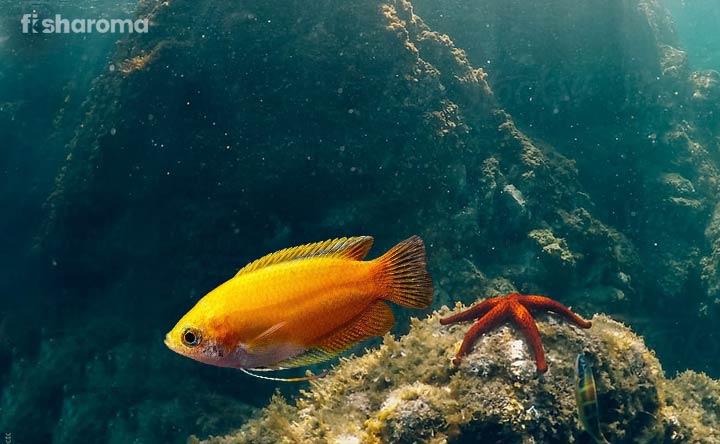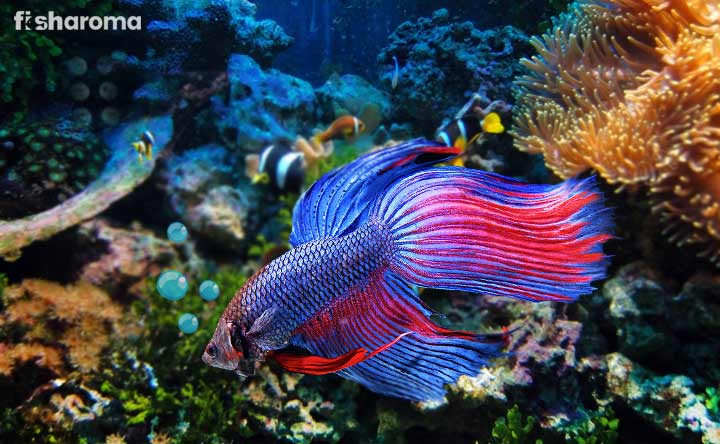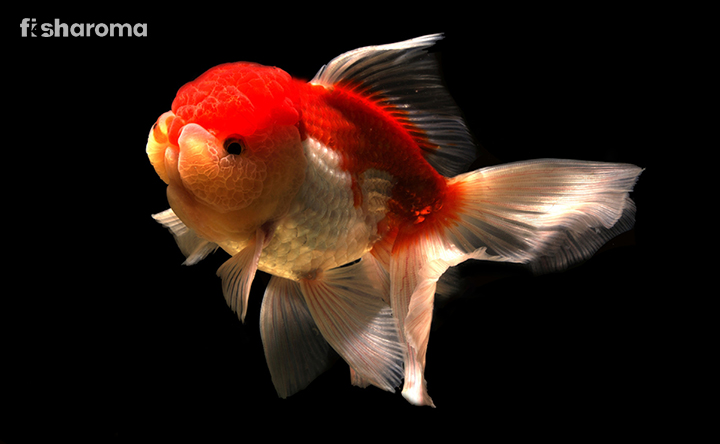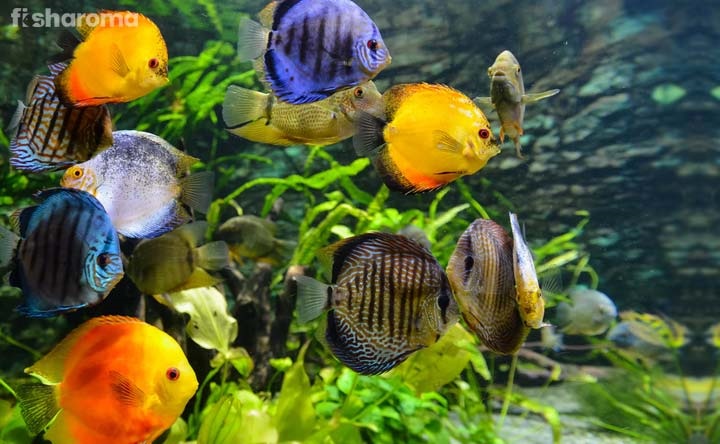Electric Yellow Cichlid- Complete Care Guide to Yellow Labs
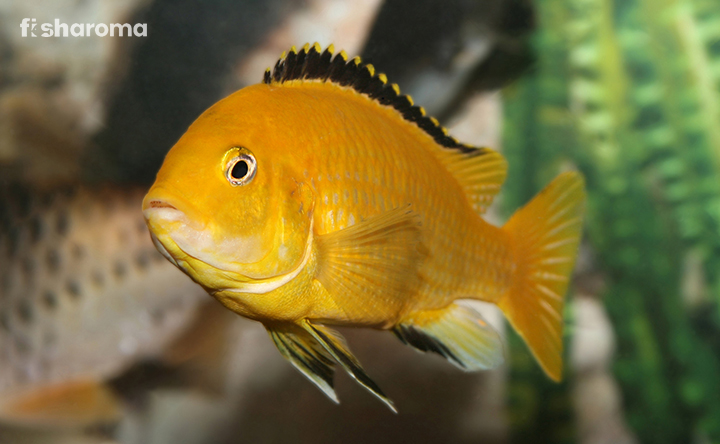
- Origin & Habitat of Electric Yellow Cichlid
- Appearance of Electric Yellow Cichlid
- Behaviour of Electric Yellow Cichlid
- Lifespan of Electric Yellow Cichlid
- Diet of Electric Yellow Cichlid
- Tank Requirements for Electric Yellow Cichlid
- Water Type for Electric Yellow Cichlid
- Compatibility of Electric Yellow Cichlid
- Breeding of Electric Yellow Cichlid
- Diseases of Electric Yellow Cichlid
- Summary
Electric Yellow Cichlid, also known by the names of Electric Yellow Lab, the Yellow Labs, Blue Streak Hap and Lemon Drop Cichlid are magnificent fish species. Their radiant yellow colouration with the subtle details is for sure eye-catching. On top, they are extremely easy to care for.
However, commercially in the fishkeeping industry they were known by the name Labidochromis tanganicae. The confusion with the scientific name was cleared later on, when they were known as Labidochromis caeruleus. There was no segregation anymore between the ones we find in the wild and the captive-bred specimens.
So, if you’re planning to keep these wonderful fishes in your aquarium, you’re in the right place. In here, we brief you with everything you need to know about them, so read on to learn them all!
Key Specifications of Electric Yellow Cichlid
Some quick information on these lovely fishes:
| Scientific Name | Labidochromis caeruleus |
| Origin | East Africa (Lake Malawi) |
| Lifespan | 6-10 years |
| Colours/Patterns | Electric YellowMauve or light blue iridescence White with pale blue (non-breeders) |
| Temperament | Aggressive towards similar species, Usually Peaceful. |
| Size | 6 inches |
| Diet | Omnivorous (Opportunistic feeder), Carnivorous (wild) |
| Family | Cichlidae |
| Compatibility | Compatible with Non-aggressive & Peaceful species. |
| Tank size | 30 gallons |
| Care level | Easy |
| Water preference | Freshwater |
| Breeding | Mouthbrooders |
Overview
From the Cichlidae family, the Electric yellow cichlids are extremely vibrant with bright colour contrasts. Their lifespan is great and they grow up to a medium size range of roughly 6 inches. They are peaceful in general, but despite their lack of territorial behaviourisms, nothing stops them from showing aggression to other similar species. Their compatibility and hardy nature make them easy to care for, which is every beginner fishkeeper’s dream.
Origin and Habitat of Electric Yellow Cichlid
This famous freshwater fish in the aquarium biz. is majorly found in the Central Region (Coastal) in Lake Malawi, specifically the Nkhata Bay region. These Mbuna or large African Cichlids are found in the pristine freshwater environment of Africa, in water bodies like lakes and similar others.
Appearance of Electric Yellow Cichlid
Known for their vibrancies, these fishes are extremely beautiful. The colours are intense and solid. Be it juveniles or adults, both the variants rock striking patterns and colourations, with many minute details that never fail to amaze.
Colour
The strong and radiant yellow colouration represents how beautiful solid hues can look on a fish. Besides, you will notice vertically placed dark or black bars on their fins (dorsal and anal) mainly in the adult variants of the fish. The juveniles, however, flaunt a brightened yellow solid colouration on them. Additionally, in the adult specimens, there are black stripes contrasting perfectly with the fish’s beautiful base colour.
This species has many different pallets to showcase. For example, in the Lion’s Cove, the yellow base colour is complemented with a white belly region, whilst an off-white body is seen in the variants from the Lundu island. The ones from Kakusa have a blue dorsal fin with the classic yellow base, off-white variant with blue fins are majorly from the Nkhata Bay. Lastly, the Undu Point offers the same fishes with a striped deep blue dorsal fin with a white body.
Size
The Electric Yellows are not that big, growing just about 3-4 inches on average, where the maximum they grow up to, is 6 inches.
Behaviour of Electric Yellow Cichlid
These Cichlids are not really much like their cousins from the Cichlidae family and are generally more or less peaceful, and shy. It is not the most common occurrence, but they do possess slight territorial instincts with anti-social behaviourisms.
Especially the male Electric Yellow Cichlids are known to show aggression towards any fish that looks similar or is similar to them. These fishes see them as a threat, more like a competition coming in the way of their food and even potential breeding mates. So, they fail to take a backseat whenever a similar size or coloured fish comes by.
Lifespan of Electric Yellow Cichlid
The Electric Yellow Cichlids can live as long as 10 years, whereas the bottom line is at least 6 years, which is pretty good. But you would have to make sure that you keep them in good water conditions with balanced parameters and hygiene.
Diet of Electric Yellow Cichlid
The Electric Yellow Cichlids are actual omnivores, however, in the wild, they can be more inclined towards a carnivorous diet. They mostly survive on invertebrates and small fishes in the wild. In an aquarium scenario, they actually appreciate vegetables, which is almost like a polar opposite behaviour, when coming in contrast with their behaviour in the wild.
Cutting to the chase, they are not very selective when it comes to their feeding preference. Vegetarian pellets or any sink-able food works perfectly for them. They do accept a wide menu, so that is never an issue.
Tank Requirements for Electric Yellow Cichlid
Let’s have a look at their essential tank requirements of Electric Yellow Cichlid fish:
Tank Lid
These beauties are jumpers with a good swimming speed. So, it is very likely for them to fall out of the aquarium. To prevent any accident of that sort, a tank hood or lid really helps. Plus, it prevents the additional accumulation of dust particles in your aquarium water, making it dirty and polluted.
Tank Size
These Cichlids require a tank size of at least 30 gallons to thrive, else lack of space for them to exist will cause them massive stress. You, as a fishkeeper, would surely want to prevent that from happening. Additionally, you may need to increase the size of your tank to as high as 55 gallons, if the size demands it.
Substrate
The Electrics like marine substrates like Tahitian Moon sand or even Aragonite. A classic fine substrate is good enough for them too, if the above-mentioned can’t be arranged for some reason. Add some rocks too, as in the wild they are found mostly in the rocky regions.
Filter
A H.O.B (Hang-on-back) or Canister filter is a fitting choice for the Electric Yellow Cichlid tank. Basically, the filters need to be strong enough, in order to handle big aquariums.
Ornaments
Electric Yellow Cichlids are beautifully balanced, who are able to enjoy the mind-blowing marine tank decor or ornaments, along with flexible freshwater tanks. Their striking beauty calls for so much more, that they will rock your tank no matter how you decorate it. Just make sure it suits, and complements the beautiful range of colourations and vibrancies they have to offer.
Lighting
These fishes like a medium to normally intense lighting, so you can be quite creative with the variations of LEDs and illuminate your aquarium as you please.
Presence of Flora
In the wild, they have consumption tendencies when it comes to plants. They like algae and some other wonders of the vegetation cover for food. However, you can introduce certain plants like Vallisneria aethiopica, since in their original habitat this is present majorly. The closest emulation to their situation in the wild is the best way to go.
Cleaning Method
Proper cleaning method of the fish tank is of utmost importance, especially, when it comes to your Electric Yellow Cichlid’s tank maintenance. It is evident that you will face difficulties dealing with your tank. So, if the proper methods and techniques are not followed, you can be in massive trouble.
Do monitor the parameters, and other important factors in the tank with care. Don’t forget to replace the aquarium water regularly (at least a 30% of water change). Other than that, do remember to clean the tank walls with a cotton cloth.
Water Type for Electric Yellow Cichlid
The importance of proper water parameters is heavy. Cichlids are euryhaline, as they are able to tolerate a wide range of salinity compared to other freshwater fishes. Some addition of salt to their tanks, not high enough to be brackish water works perfectly.
Let’s have a look:
| Hardness | 15-20 dGH |
| Temperature | 23.8-26.6 Degrees Celsius |
| pH | 7.7-8.5 |
| Gravity | >1.0002 |
Hardness
These hardy Cichlid species like their general water hardness range to be 15-20 dGH.
Temperature
Water in their aquarium should have a neutral to warm temperature, so keep the range between 23.3-26 Degrees Celsius.
pH
The water should be alkaline, so the pH range should be 7.7-8.5.
Gravity
Keep the gravity of the freshwater tank with slight salinity under 1.0002.
Compatibility of Electric Yellow Cichlid
The Yellow Labs are mostly compatible with fishes who possess no aggression and are heavily peace-loving beings. Other similar Mbuna fishes are the best tank mate choices for them.
Suitable Tank mates
Some of the most suitable tank mates:
- Blue Dolphin Cichlid
- Perlmutt
- Zebroid
- Yellow Tail Acei Cichlid
- Rusty Cichlid
In a species-specific tank, make sure you manage the sex ratios well. There should be one male fish to every female fish.
Unsuitable Tank mates
Temperament-wise they are peaceful, but are more inclined towards sharing a tank with other Cichlids despite subtle behaviour differences. However, you must keep in mind that bottom-dwellers are a strict no-no. Delicate beings like shrimps, snails, crabs or even other fishes smaller than them will end up becoming prey.
Other large and predatory fishes which show aggression can also be a major threat to your precious Cichlids. Similarly in this situation, the Yellow labs themselves would be prey to the bigger fishes.
Breeding of Electric Yellow Cichlid
Luckily, Electric Yellow Cichlids are easy to breed. Just when they reach 6 months of their lifespan, they are prepared to reproduce. The size at the time is around just 1.5 inches, which is an indication of their maturity and physical attributes that showcase their readiness to mate.
Sexing the fish
Make sure you have a separate breeding tank for the process to begin. That exclusive aquarium should have proper parameters and a slightly raised temperature in order to encourage the process. Don’t forget to incorporate proper hiding spots for your fish or fry to feel secure in the time of need.
The male variants showcase a unique way of impressing the females. They tend to do a very interesting dance. They move their little bodies in a very adorable manner, trying to dig through the layer of substrate, just to get the female fish’s attention. When the female gets impressed by the male fish’s effort, their bodies simultaneously start moving. It is almost like a green signal for the males and the process to finally take place.
Hatching & Aftercare
These female Cichlids lay about 30 eggs at a time, where the bottom-line is 10 eggs. Since they are mouth brooders, the female takes the eggs in her mouth immediately. After the eggs finally get fertilized by the male fish.
The male actually flare their anal fin, which showcase a unique egg-spot like pattern on top of it. The female variants misunderstand that very vision for their actual eggs and takes the anal fin of the male in their mouth. After the males discharge the cloud of milt, the females inhale it and the eggs are ultimately fertilized.
The females don’t consume any food or nutrition when they are actively raising the eggs in their mouth to hatch, for as long as 40 days on a stretch. When the fry is finally free-swimming, the parent fish (mother) has a strong parental instinct, which is evident when they get protective about their newly hatched babies. Make sure you provide the fry with small enough feedable items like baby brine shrimp and dried fish food.
Diseases of Electric Yellow Cichlid
These Malawi region Cichlids are mostly prone to the deadly Malawi Bloat. Things like under-maintained water parameters or poor water quality, less or excess supply of nitrogen, phosphates and copper, along with lack of properly oxygenated water can make this illness happen.
There is very less vegetation in the Malawi lake region, so this disease is really common there. Yellow labs are sort of secure from this disease but not completely immune. Keeping that in mind, make sure the conditions in your Electric Yellow Cichlid aquarium never comes to that.
Other than that, just like other regular freshwater fishes, they are prone to common aquarium diseases like Ich and other bacterial or parasitic infections of similar nature.
Treatment
The classic copper-based medication helps with ailments like Ich. Also, don’t forget to keep the water conditions crystal clear, with proper conditions and parameters. Keeping the tank clean, free from moulds and overgrowth also helps.
When it comes to your own responsibility, make sure you monitor your precious fish carefully for signs and early detection. Make sure you separate the diseased fish into a separate treatment tank to prevent the further spread of any contagious disease.
Up the temperature by a few degrees than the average suggested range. The raised temperature sometimes helps. Just don’t exceed 3 days when you’re performing this method of treatment.
Summary
The Electric Yellow Cichlid is a majestic and immensely beautiful being. They are easy to care for, where their vibrancy looks absolutely serene in your tank. Even breeding them in captivity is not a problem, nor is the feeding process.
Hence, when you’re choosing the right fishes who deserve to be a part of your aquarium and are all-rounders, the Electrics make a perfect choice for that. As we have discussed in this article, just make sure they are in a properly ratio’d species-specific tank or with other cichlids and your lovely Yellow labs are going to be stress-free. Lack of stress and proper overall health keeps them happy and thriving.
Similar Care Guides You may like
- Kribensis Cichlid Care Guide: These radiant beings have a bold set of colourations, which never fails to fetch your attention. To know more about this fish species, check right here!
- Blood Parrot Cichlid Care Guide: This exquisite breed is not everyone’s cup of tea, but could very well be yours. That’ll happen in a zap, only if you check this out!
- Peacock Cichlid Care Guide: This freshwater beauty literally has “Peacock” in its name, so what better symbolism to scream about the fish’s appeal? Learn about their care routine, right here.

